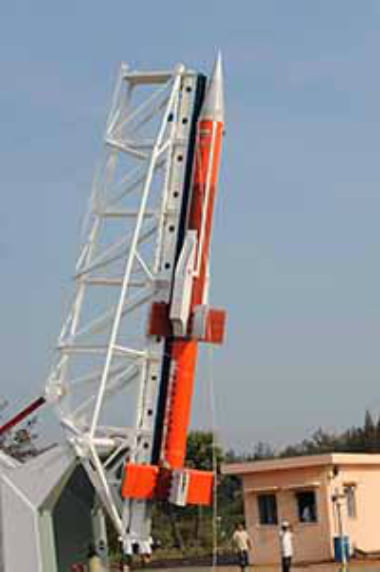Adding another feather to its cap, Indian Space Research Organisation (Isro), on Sunday, successfully tested two indigenous scramjet engines at the the Satish Dhawan Space Centre at Sriharikota in Andhra Pradesh at around 6.00 am. The on-flight test of the two air-breathing engines was conducted successfully with Isro’s Advanced Technology Vehicle (ATV), which is an advanced sounding rocket.
The rocket weighed 3,277 kg during lift-off.
According to an Isro official, “The scramjet engines were ignited 55 seconds into the rocket’s flight. The engines were tested for six seconds.” But what is it about the scramjet that makes it stand apart from other rocket engines, already a part of Isro’s fleet? Cutting through the technical jargon, here’s all you need to know about Isros latest feat.

Image courtest: Isro website
Scientists say that the scramjet technology effectively cuts down the cost of launching rockets by reducing its weight by more than half, according to The Times of India. Oxygen is as essential for the process of combustion as it is for sustenance of life. Therefore a rocket, during its launch, needs to combine a combustion fuel with liquid oxygen to create the thrust needed for the take-off and flight. However, if the need for liquid oxygen is taken away, the space craft can be much lighter, hence cheaper to launch. The technology also has the potential to be adapted to commercial planes and it can substantially reduce the travelling time as well.
This is what essentially SCRAMJET or Super Sonic combustion Ramjet achieves, by reducing the amount of oxidiser to be carried along with the fuel. While conventional rocket engines need to carry both fuel and oxidiser on board for combustion to produce thrust, air-breathing rocket systems on the other hand uses the atmospheric oxygen from their surroundings and burn it with the stored on- board fuel. Scramjet engines obtain oxygen from the atmosphere by compressing the incoming air before combustion at hypersonic speed. It uses hydrogen as fuel and the oxygen from the atmospheric air as the oxidiser.
When the rocket reaches a height of 11 km, the scramjet engines would start breathing air directly from the atmosphere, therefore the spacecraft can be smaller or carry more payloads, making it a commercially viable option. According to The Times of India report Isro’s main concern was igniting the air-breathing engine in the air and then sustaining the flame at supersonic speed. “If the engine can sustain it for five seconds, then it can last for even 1000 seconds,” an Isro official told The Times of India.
The engines were successfully tested for six seconds on Sunday. The test flight was the maiden short duration experimental test of Isro’s scramjet engine with a hypersonic flight at 6 Mach.
The engine when fully developed, will eventually be used in Reusable Launch Vehicles or RLV’s.
According to Isro, some of the technological challenges handled by Isro during the development of scramjet engine include the design and development of hypersonic engine air intake, the supersonic combustor, development of materials withstanding very high temperatures, computational tools to simulate hypersonic flow, ensuring performance and operability of the engine across a wide range of flight speeds, proper thermal management and ground testing of the engines.
“India is the fourth country to demonstrate the flight testing of scramjet engine. The successful technology demonstration of air-breathing scramjet engines in flight by Isro is a modest yet important milestone in its endeavour to design and develop advanced air breathing engines including engines for Isro’s future space transportation system,” the space agency added.
According to the Isro website, the current space transportation systems are expendable in nature and use the conventional chemical rocket systems for their propulsion, which makes it a cost-heavy exercise (in the range of $12,000 to $15,000 per kg). However, cutting down on the need to accommodate liquid oxygen in the spacecraft will bring down the costs heavily. However, the scramjet engines can be used only during the atmospheric phase of the rocket’s flight (when atmospheric oxygen is available for use). So, the technology needs to be combined with the conventional chemical rockets, for meeting the final orbital velocity requirements.
According to a report by NDTV, the scramjet will bring down the launch cost of weather satellite INSAT-3DR which is a high-end weather forecast system designed for enhanced meteorological observations and disaster warning. The satellite scheduled to be launched in August earlier, but it has been postponed to September.
[Source:-F. INDIA]



